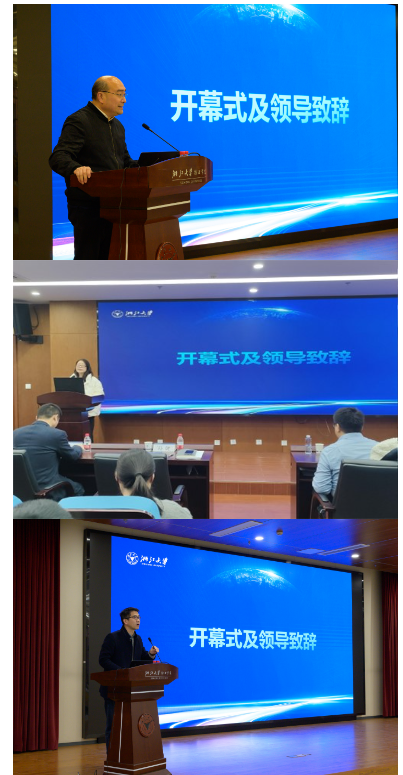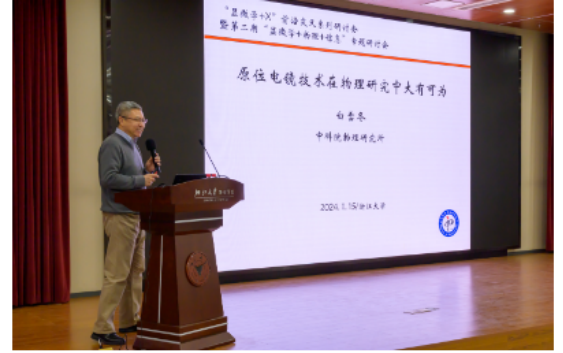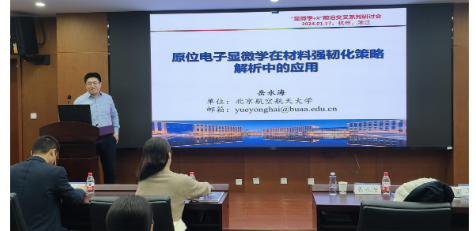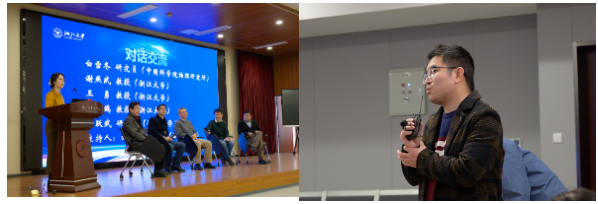On January 15 and January 17, 2024, sponsored by the School of Materials Science and Engineering, Laboratory and Equipment Management Office, and Research Institute of Science and Technology of Zhejiang University, and hosted by the Electron Microscopy Center of Zhejiang University and the Advanced Technology Cluster of Electron Microscopy, the second and third sessions of the Microscopy +X Frontier Cross Seminar series were successfully held in Zijingang Campus of Zhejiang University. The conference was co-organized by the School of Physics, the School of Mechanical Engineering, the School of Aeronautics and Astronautics and other units, leaders of relevant units, as well as experts, scholars and students from all over the country attended the conference.

The second session of the seminar was themed microscopy + Physics + information. Bai Xuedong, a researcher from the Institute of Physics of the Chinese Academy of Sciences, reviewed the development and breakthrough of in-situ electron microscopy methods and technologies in recent years, and introduced the relevant research on nanoscale material measurement, structure and state regulation with the help of in-situ electron microscopy technology. The in situ electron microscope technique has great potential in physics research.

The theme of the third session was Microscopy + Mechanics + Materials. Professor Yue Yonghai from Beijing University of Aeronautics and Astronautics cut into the development history of in-situ electron microscopy, combined with the research results of the team in artificial tooth enamel, nanotwinning diamond and other aspects, vividly explained the strong compatibility of in-situ scanning electron microscopy (SEM) compared with other characterization devices.

Focusing on the theme of Microscopy +X, the importance of the application of high-end electron microscopy in multidisciplinary scientific research was emphasized, hoping to take this seminar as an opportunity to deepen the understanding of microscopy, promote the application and deep cross-cooperation of microscopy in materials, physics, information, mechanics and other disciplines, and promote innovation and development in different disciplines.




